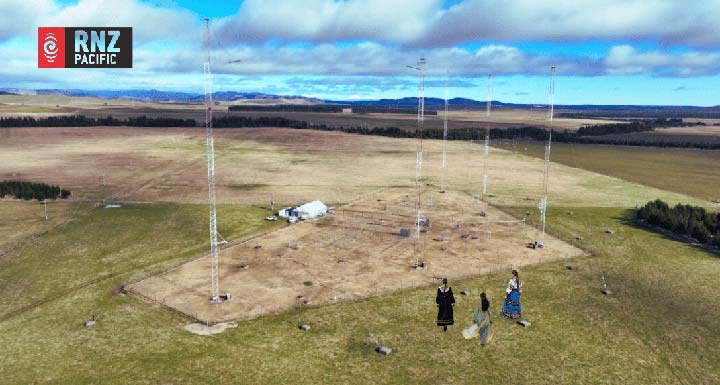In a world where digital platforms and streaming services seem to dominate the media landscape, it's refreshing to see some broadcasters staying committed to traditional methods. Radio New Zealand (RNZ) Pacific is boldly embracing the future of shortwave broadcasting with its latest technological upgrade. They are installing a state-of-the-art 100 kW Ampegon TSW-2100 shortwave transmitter. While many international broadcasters are phasing out their shortwave services, RNZ Pacific is bucking the trend. It demonstrates that shortwave remains an essential tool for communication, especially across vast and remote areas like the Pacific.
RNZ Pacific: Embracing Shortwave with Cutting-Edge Technology
Officially brought online on August 1, 2024, the new transmitter replaces the aging “Transmitter 1.” Which had served RNZ Pacific since 1989. Nestled in Rangitaiki, near Taupō in New Zealand’s central North Island, this new equipment is part of a substantial NZ$4.4 million (US$2.4 million) investment to enhance RNZ Pacific’s broadcasting capabilities. The Ampegon TSW-2100 is equipped to handle analog and Digital Radio Mondiale (DRM) transmissions. It will ensure that RNZ Pacific’s broadcasts remain robust and high-quality, regardless of weather conditions or other disruptions.
The transmitter's launch was celebrated with a ceremony attended by high-profile dignitaries. Among those present were New Zealand’s Foreign Affairs Minister, Winston Peters, and representatives from several Pacific nations. They are from Kiribati, the Cook Islands, Samoa, Fiji, Papua New Guinea, and the Solomon Islands. The event underscored the importance of this upgrade not just for New Zealand but for the entire Pacific region. Which relies heavily on RNZ Pacific for news, information, and emergency broadcasts.
Minister Peters took the opportunity to remind everyone of the critical role shortwave has played in RNZ Pacific’s history. “Shortwave was crucial when the New Zealand Broadcasting Service began in 1948, and it remains indispensable today,” Peters stated. His words rang true, particularly in times of crisis, when other forms of communication may fail. Shortwave broadcasting proved its worth during the 2022 Hunga Tonga–Hunga Haʻapai eruption when the disaster severed internet connections in Tonga for weeks. Still, RNZ Pacific’s shortwave broadcasts continued without interruption, offering a crucial lifeline of information to the affected population.
A Glimpse into the Rich History of Radio New Zealand International
Radio New Zealand International, now known as RNZ Pacific, has a storied history dating back to its inception in 1948. Launched initially to connect New Zealand with its Pacific neighbors and provide a reliable source of information. It quickly became a vital communication channel during emergencies and times of crisis. Over the decades, RNZ Pacific has evolved, adapting to new technologies while staying true to its mission of broadcasting Pacific news, stories, and culture to a wide audience. Its commitment to shortwave broadcasting, even as other countries have pulled back, underscores its dedication to serving the needs of Pacific island communities. Also, ensuring they have access to reliable and timely information.
RNZ Pacific with DRM Digital Capabilities
RNZ Pacific’s new transmitter isn’t just a testament to the broadcaster’s commitment to shortwave; it also showcases the latest in broadcasting technology. By incorporating Digital Radio Mondiale (DRM) capabilities, RNZ Pacific ensures that local broadcasters across the Pacific can rebroadcast its digital streams without losing any audio quality. This advancement is particularly significant for remote areas, where clarity and reliability of communication are paramount. It noted that 22 broadcast partners in nine Pacific island nations already utilize DRM.
This successful upgrade marks a significant milestone for RNZ Pacific. It also sets the stage for the broadcaster to continue its legacy of delivering unique stories from the Pacific, ensuring that the human connection through radio endures no matter how far technology advances. When the media world is increasingly dominated by digital platforms, RNZ Pacific’s investment in shortwave and DRM technology. It is a powerful reminder of the importance of resilient, reliable communication channels. As RNZ Pacific enters this new era, it not only strengthens its role as a critical information source but also honors its rich history of connecting the Pacific region through the power of radio.
Note: New Transmitter of RNZ-Pacific information credit goes to Mr. T. Carter Ross in Radio World magazine.


